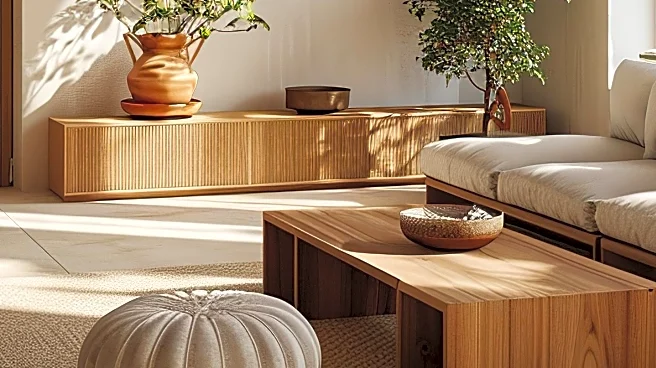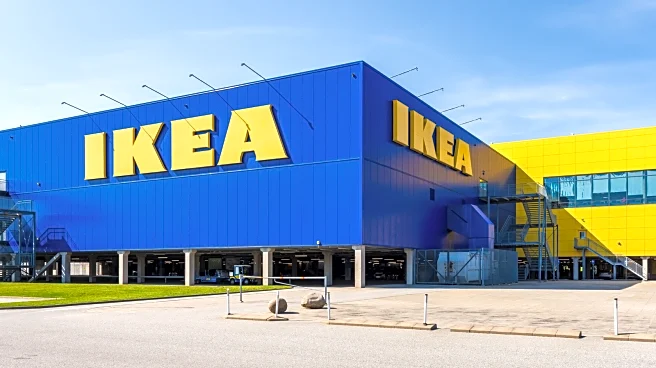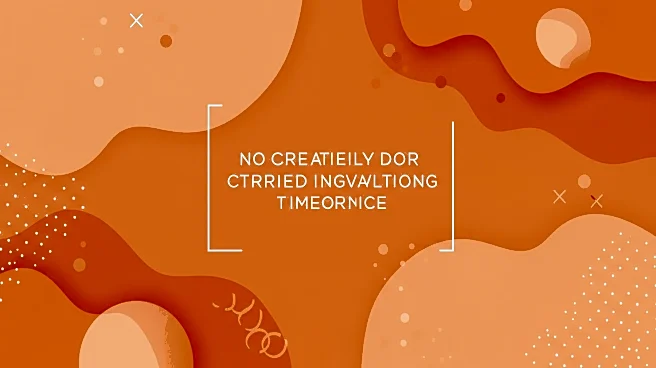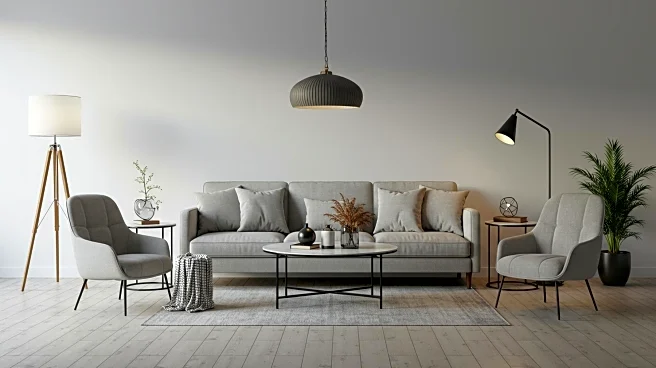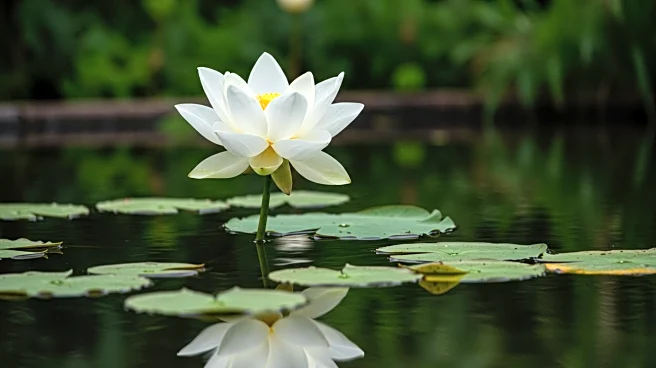What's Happening?
Pine, once considered an interior design faux pas, is experiencing a resurgence in popularity. This softwood, characterized by its brown knots and smooth grain, is being used in various forms, from wall cladding to furniture pieces. Google searches for pine have increased by over 5,000% globally, and sales of pine furniture have jumped by 500% at second-hand sites like Vinterior. Designers such as Faye Toogood and Axel Einar Hjorth are contributing to this trend by incorporating pine into their creations, highlighting its versatility and rustic appeal. Pine is also favored for its sustainability, as it grows quickly and is often sourced responsibly.
Why It's Important?
The renewed interest in pine reflects a broader shift towards sustainable and affordable materials in interior design. As consumers become more environmentally conscious, the demand for responsibly sourced materials like pine is likely to grow. This trend could influence the furniture industry, encouraging manufacturers to explore eco-friendly options. Additionally, the popularity of pine may lead to increased appreciation for traditional craftsmanship and design, as seen in the works of designers like Axel Einar Hjorth. The resurgence of pine also offers a fresh aesthetic alternative to mid-century favorites like teak, providing consumers with diverse design choices.
What's Next?
As the trend continues, interior designers and manufacturers may explore innovative ways to incorporate pine into modern decor. This could include experimenting with different treatments and finishes to enhance its appeal. The growing demand for pine might also lead to collaborations between designers and sustainable forestry initiatives, promoting responsible sourcing practices. Additionally, the trend could inspire new design movements that prioritize natural materials and traditional craftsmanship, influencing future interior design styles.
Beyond the Headlines
The pine resurgence highlights a cultural shift towards valuing simplicity and authenticity in home decor. This trend may encourage consumers to embrace imperfections and unique characteristics in materials, fostering a deeper appreciation for natural beauty. Furthermore, the use of pine in interior design could spark discussions about the balance between aesthetics and sustainability, prompting industry leaders to consider the environmental impact of their choices.


